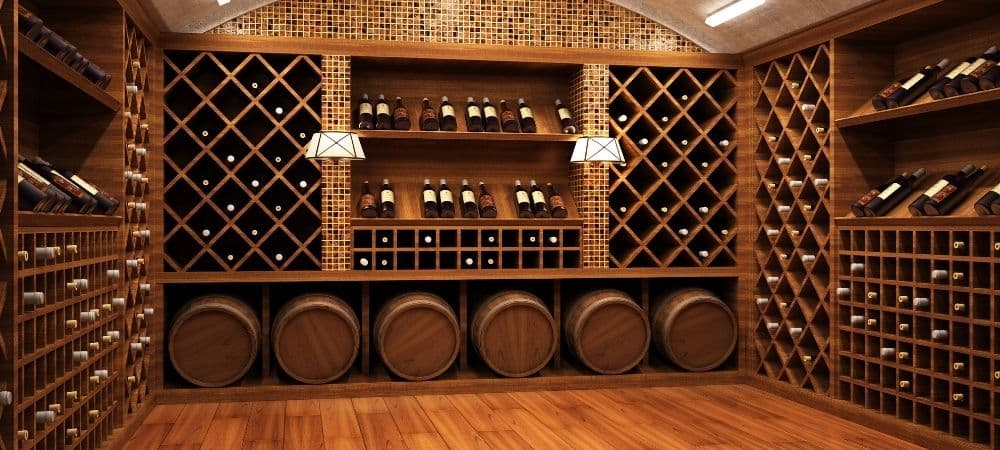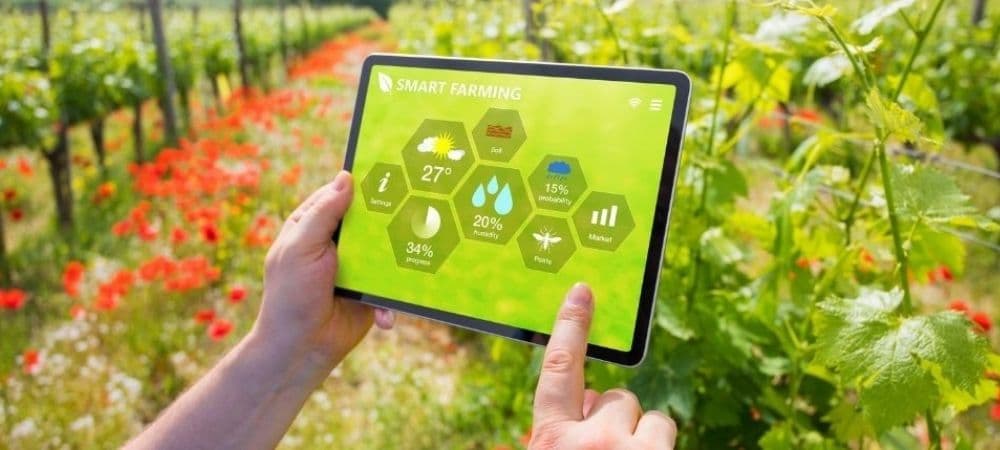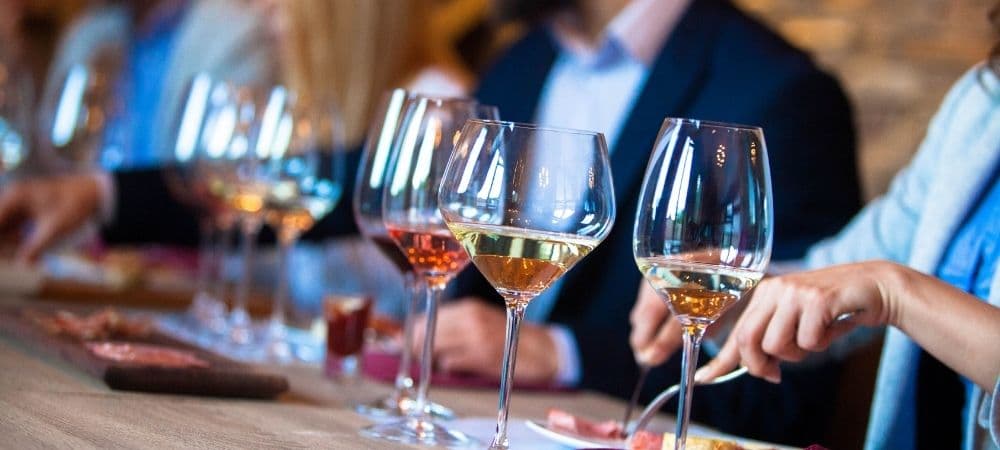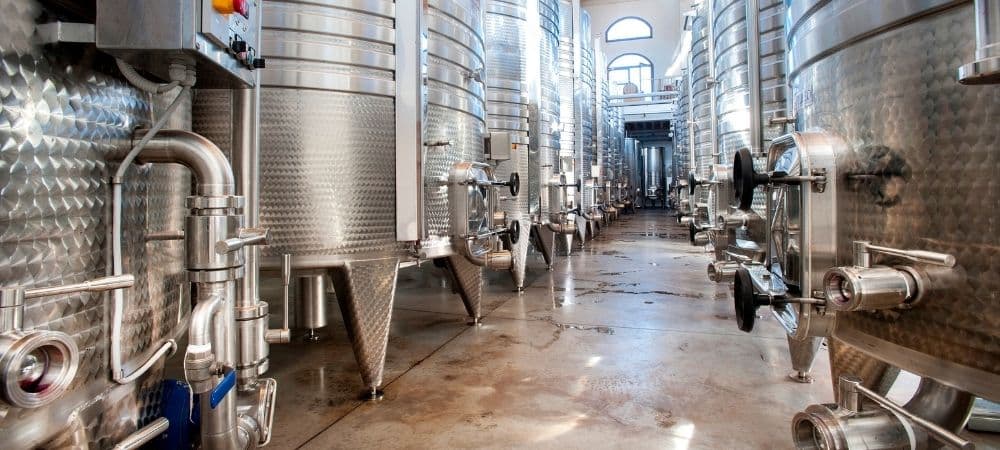We use cookies to offer you a better experience. For more information on how we use cookies you can read our Cookie and Privacy Policy.
Technology in the Wine Industry
May 11, 2021

The wine business in the U.S. is hitting its stride, with $75.1 billion in sales nationwide in 2019, the most recent numbers available. The pandemic slowed down some aspects of the business, including the closure of many wineries and in-person tasting events, but online sales grew by 80% over the past year.
This shows how one trend of technology in the wine industry, ecommerce, can save and even transform the business. Here are five other trends set to change how the wine industry plans, produces, and distributes its product.
Top 5 tech trends in wine
While the recipes used by vintners may be hundreds or even thousands of years old, there’s no benefit to keeping everything the same as the world changes around them. Wine businesses that embrace technology trends and separate the gimmicks from the tested advances can gain market share, build a better relationship with their customers, and expand their company mission to do more than just make and sell wine.
New tech models can tweak and refine every element of the process from wine production to consumption. Here are the ones worth keeping an eye on.
1. Precision viticulture through IoT and software

Our culture is at a point of no return with the Internet of things (IoT), with voice commands and smart devices helping to automate more and more of our lives. That’s also true in the wine industry, particularly in farming and production management. IoT examples include using intelligent tracking devices to check up on the health of grapevines and the presence of invasive species. Automation is even driving the handling of soil temperatures and hydration.
It doesn’t stop at the fields, though. Once the wine is made, producers can monitor the cellars used to store the expensive merchandise for appropriate temperature and humidity levels. With an extra eye on quality, wine can last much longer than before, and dangerous changes to the environment won’t go unnoticed.
Being more informed is just one advantage of the IoT trend. With connected irrigation units and thermostats, producers can make adjustments to save crops (and wine collections) before they even know there is a problem.
This is even more achievable through innovative wine industry software, which provides easier solutions for all aspects of vineyard management and the winemaking process. Cloud-based wine production software like Innovint can help producers keep track of everything from inventory to seasonal trends to compliance reports.
2. Drone and last-mile delivery
Last-mile delivery is not a new trend, but wine tracking apps and shipment notifications are. Getting wine to the consumer can be challenging, especially when shipping networks are at capacity and the contents are fragile. Sellers already have to deal with expensive packing materials while they meet unique state legalities on how and where to deliver.
The addition of specialized last-mile services specific to the wine industry is becoming a real possibility for more producers. Just like Amazon has its own last-mile delivery drivers, we could see more wine-branded vans and trucks pulling up to hand-deliver those precious bottles directly to the consumer, guided by the efficient uses of tech-equipped GPS, wine inventory apps, driver guides, and optimized routing.
When vans or trucks can't make the drive, there's still an option for drones. While the drone business is fraught with FAA regulation, local zoning ordinances, and the limitations on drones themselves, we're seeing it done well in some industries already. In areas where drones are embraced and normalized, the prospect of delivering a $100 bottle of bubbly in a drone-delivered basket isn't far-fetched. In fact, it could be cheaper and safer than driving across town in rush-hour traffic for that single bottle.
3. Improved customer experience
There’s more to wine education than reading labels, so winemakers are turning to tech to inform, educate, and even entertain their audiences. One notable example is 19 Crimes and its line of augmented reality wine labels. Consumers use their smartphone camera from inside the 19 Crimes app to capture the image of their IRL bottle. As a reward, they’re treated to a short story about the criminal on the bottle, complete with movement and voice to bring the history to life.

Virtual reality is also a notable next step for winemakers, with the tech playing a growing role in virtual tasting rooms and related wine club events that bring people into a more unique experience through tech. With the pandemic prompting more virtual events, this may have been a breakthrough born out of necessity. However, many acknowledge that it’s here to stay.
Finally, what are the recommended food pairings for your wine? Are there tasting notes they should recognize? This is where a virtual assistant like Amazon’s Alexa can help your audience make the right choices and even give background information on that special red. The days of a “robot sommelier” may be closer than we think.
4. Eco-friendly bottling options
Is this the end of the glass bottle? The U.K.’s Garcon Wines made headlines with its PET plastic "flat" bottles that take up less space in shipping than rounded bottles and make good use of existing plastic instead of single-use materials. While the trend is new and hasn't made its way to U.S. shelves, the number of countries embracing the trend is growing quickly.
Producers are already using single-serve aluminium cans for wine, which has the potential for easier recycling. It’s likely we’ll see more of this as people get over their assumptions that the best wine has to come from glass bottles. The convenience of this trend means more than recycling, though, since consumers can more easily purchase wine to bring with them to an event like they would other beverages. The single-glass wine market exists and is ready to be served accordingly.
Another notable tech advancement is edible packaging, which may include packaging materials made from seaweed, mushrooms, or eggshells and could soon extend into the bottling itself. This edible packing industry is poised for real growth, so it's only a matter of time before our wine experience changes as a result.
5. Online to IRL communities
Does your audience miss the days of wine tastings? They don’t have to feel alone, thanks to companies like NakedWines.com that help people discover wines, meet the vintners, and reveal their wine personality. When a customer signs up, they can order right away, then receive new wine recommendations based on their reaction to each successive shipment of wines. Not only that, they can connect with others who also love that vintner, and talk to the families behind each business. It all takes place through social media and the wine seller’s own website.
Going one step further, the possibilities with AI and geo-targeted tech may even pair up wine lovers for more in-person encounters. Imagine a smartphone wine app that tells you not just who is single and looking for company in a city but also loves the smooth mouthfeel of that limited-edition Pinot you just tried. Could this be the new dating app? Time will tell, but the possibilities of making an extra-special connection through location and wine personality are very, very real.

What is the future of wine?
The positive impact of tech on the wine industry is undeniable. And the good news is that it can help businesses innovate in ways that offer immediate ROI without forcing them to sacrifice family recipes or traditions. IoT, for example, is here to stay, and it impacts how we schedule family events, where we shop, and much more. Wine fits naturally into this concept.
It's also driving production in a way that winemakers can use to make their operations leaner, more profitable, and even healthier. The sustainability possibilities from reducing waste and increasing production are worth investigating, too. In recent seasons, the setbacks that winemakers have had to endure, including fire, floods, and pandemic closures, make using tech vital to help bounce back quickly after each crisis. Tech in the wine industry could even save businesses that wouldn’t have made it in past decades.
Conclusion
Updated tech trends put legacy winemakers, distributors, and sellers in a position to cater to a newer, younger market that has never been without smartphone tech. No one knows for sure what all of this will yield, but one thing is certain: wine, like tech, is integrated into people's lives, so most consumers won't balk at the idea of combining the two. They just expect both to be there in their best of times and their worst of times.
Wine professionals can actively research the newest tech to continue building a brand that tells consumers they can grow and change as needed. The reward will be wine enthusiasts eager to form a better connection with their favourite varietal. That’s something even the historically tech-averse can raise a glass to.
About the Author: Linsey Knerl is a contributing writer for HP Tech@Work. Linsey is a Midwest-based author, public speaker, and member of the ASJA. She has a passion for helping consumers and small business owners do more with their resources via the latest tech solutions.
Article reposted with permission from HP Tech Takes






